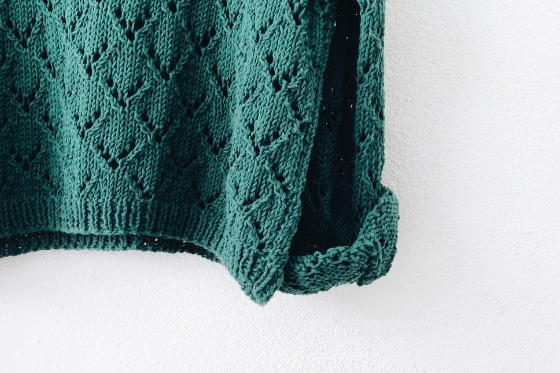
Many types of paper art are available. We'll be covering a range of mediums that can be used to create your paper art. We will also discuss drawing chalks and Liquid Acrylic. We'll also cover the differences and uses of each type of media. These materials offer many benefits.
Watercolor pencils
Watercolor pencils can be used to create paper art. Watercolor pencils spread easily when activated with water, just like regular colored pencils. This makes them an ideal tool for blending adjacent hues into lighter areas. Their marks may be either beneficial or detrimental to the work. Here are some tips to use watercolor pencils in paper art. Start by choosing one of these recommended sets.
Liquid acrylic
You can choose from a wide range of acrylic papers to make art. The type of acrylic chosen will dictate the choice. This article will discuss the most popular options as well as how they can be used. For instance, you can use an acrylic painting technique on canvas, paper, or board. A canvas pad is basically a primed canvas material filled with acrylic paint. Canvas pads can be used on canvas as well as board and have the same benefits that acrylic paper.

Drawing chalks
Paper art is an extremely versatile medium that can be used to create many designs. Paper, unlike other media, is not free from acid and can yellow over time. These papers are laid in parallel lines and work well with pastels. These types of paper are very popular for figure drawing and portrait sketches. Canson Ingres pastel and Hahnemuhle Ingres are excellent choices. Strathmore 500 series Charcoal Paper is an alternative laid paper.
Graphite
Graphite is a form of drawing that is traditionally done on paper. There are many different types of drawing paper available on the marketplace, but not all of them can be described as equal. There are many types of drawing paper on the market, each with its own purpose and tooth. Graphite drawings often require a paper of fine texture. This is uncommon in drawing paper.
Charcoal
If you are a fan of pastels, charcoal papers is your best bet. This 100% cotton card stock has a deckled, laid surface, making it the perfect foundation to pastels. Charcoal is a great choice for pastels, as well as other bright white pigments, because of its deep black tone. Charcoal can be used to create many effects, including texture and sharp lines. Charcoal paper is a staple in the artist community.
Pastels dry
Oil pastels have a chalky texture and can be used either dry or wet. Many types of oil pastels are available in pencil or stick form. Caran d'Ache Neo II, Talens Art Creation Oil Pastels and most hard chalk pastels can be water-soluble. Both oil pastels are easily mixed with a cloth and diluted with mineral spirits. They are more expensive that chalk pastels but are better for work with more intense colors.

Origami
Origami, an ancient Japanese craft with many styles and uses, is a Japanese art. Origami can be divided into three basic levels depending on how simple or complex a model is. Basic folds like the valley, peak and squash folds are used for simple models. Intermediate models need more sophisticated techniques like the reverse fold and pleats. The most difficult level requires complex foldings that can take several years to perfect.
Printmaking paper
Quality paper is essential for printing. Blick's extensive range of papermaking papers are suitable for both block and relief printing. Each sheet is acid-free, textured, heavyweight and suitable for a wide range of printing processes. They also offer acetate films and stencil papers to help you create your own unique prints. Whether you're a beginner or experienced artist, Blick's fine art printing papers will meet your needs.
FAQ
What are some good hobbies ideas?
Your favorite hobbies are ones you enjoy. You will find it easier to stay motivated if you love what your doing. If you don't feel well or tired, you will always have an excuse!
Hobbies that we all know and love include gardening, painting and crafts, photography, cooking, sports and games, reading, music, film-making, collecting, cycling, walking, dancing, writing, playing instruments, etc.
Volunteering could be a great option.
You might be looking for something more adventurous. Consider scuba diving and skydiving.
There are many ways to enjoy nature, even if you don't want to travel far. These include caving.
What are your competitive hobbies?
Running, swimming, cycling and tennis are all competitive sports.
They're usually played by people who enjoy physical activity but also provide an opportunity for social interaction.
If your hobby is physical activity, chances are that others share it.
You might consider joining a group or club that meets regularly to play together in sports.
You can also participate in team games where you play alongside others.
These include football (soccer), cricket, rugby, netball, basketball, hockey, baseball, volleyball, badminton, squash, handball, and table tennis.
There are many types competition.
Some competitions are only for recreational purposes.
Others are meant to test competitors' skills.
Yet, there are others that reward exceptional performance.
In these cases, the winners receive prizes.
Other competitions are intended to test strength and stamina.
These are known endurance events.
For example, marathon races, triathlons, Ironman Triathlon, etc.
Before competing in these events, athletes train hard.
To prepare them mentally and physically, they will be following a strict training regimen.
They might also have to travel for preparation.
It is important to keep in mind that not all athletes can compete in every event.
What are some good hobbies for seniors to do?
Senior citizens should find activities they love to do. Active seniors should take up sports and other physical activities.
They might be interested in joining clubs that offer similar interests. This will make them less lonely as they age.
Seniors must also be on the cutting edge of new trends. They could be interested in fashion, art, music and literature.
Why do we need hobbies
Hobbies are an integral part of our daily lives. They allow us to relax, unwind and think creatively. We also have the chance to learn new skills and pursue lifelong passions.
Hobbies help us to find meaning and purpose in our lives.
These can often be a great way to get some extra time while you have nothing else.
They are also very entertaining!
If you don’t make time for a hobby then it’s probably not worth your time.
Look at all the options. Perhaps you should get a hobby started today if you don’t already have one.
What are educational hobbies?
A hobby that teaches you something is called an educational hobby. This could be anything you want, such as playing sports or learning how to play an instruments.
It should be enjoyable and have fun. While you don't need to do it every day, if bored you might consider other activities.
These activities could end up costing you far more than what you pay for.
What types of hobbies are suitable for introverts?
The ability to focus on just one thing is a hallmark of introverts. They tend to prefer solitary activities such as reading, writing, playing music, watching movies, etc.
They enjoy being alone and spending time alone. They are not social creatures and don't want to be around people all day. They often feel bored when they are surrounded by people.
This is why introverts often choose hobbies that require them to be alone. An introvert might like to read, listen to music, take photographs, paint, write poetry, or even create art.
Some introverts will even live alone. They can concentrate on their hobby without being distracted.
Statistics
- In comparison, men in the “no humor” condition were refused 84.6% of the time and were only accepted 15.4% of the time. (time.com)
- Almost 80% of people claim to have no hobby. (hobbylark.com)
- Much of this decline reflects the fact that teens are less likely to work today than in the past; among employed teens, the amount of time spent working is not much different now than it was around 2005. (pewresearch.org)
- This 100% accurate personality-analyzing hobby quiz discovers your passion based on your characteristics. (quizexpo.com)
- Studies show that just six minutes of reading can reduce stress levels by 60 percent. (oberlo.com)
External Links
How To
How to Get Started in Baking
Baking refers to the preparation of food from flour, eggs and sugar. Baking is a process that uses flour, fats and sugars, leavening agents as well as salt and water. We'll be covering how to make bread. Common ingredients such as wheat flour, yeast and milk powder, eggs whites, butter, oil, salt, honey, and olive oil will all be used.
Mix these ingredients together to make bread. First, add the dry ingredients to your bowl (flour. yeast. salt). Then, add in the wet ingredients: milk powder, egg yolk. Mix them well. Add the honey and mix the dough. Knead the dough for about 30 seconds. Let the dough rise for around 30 minutes. After rising, the dough should be light and soft. You can roll the dough out and place on a baking pan. Bake at 180°C for 15 minutes.